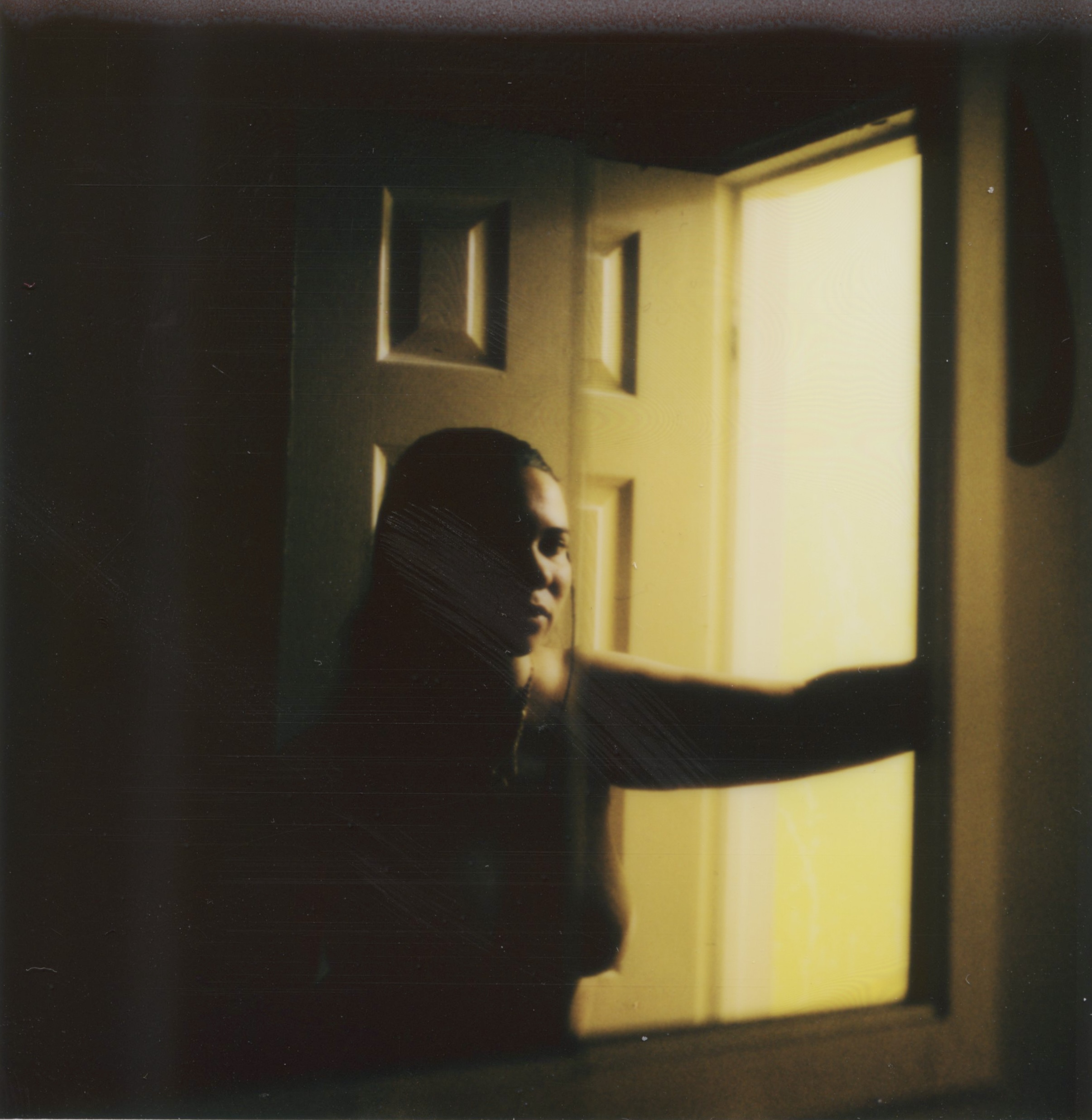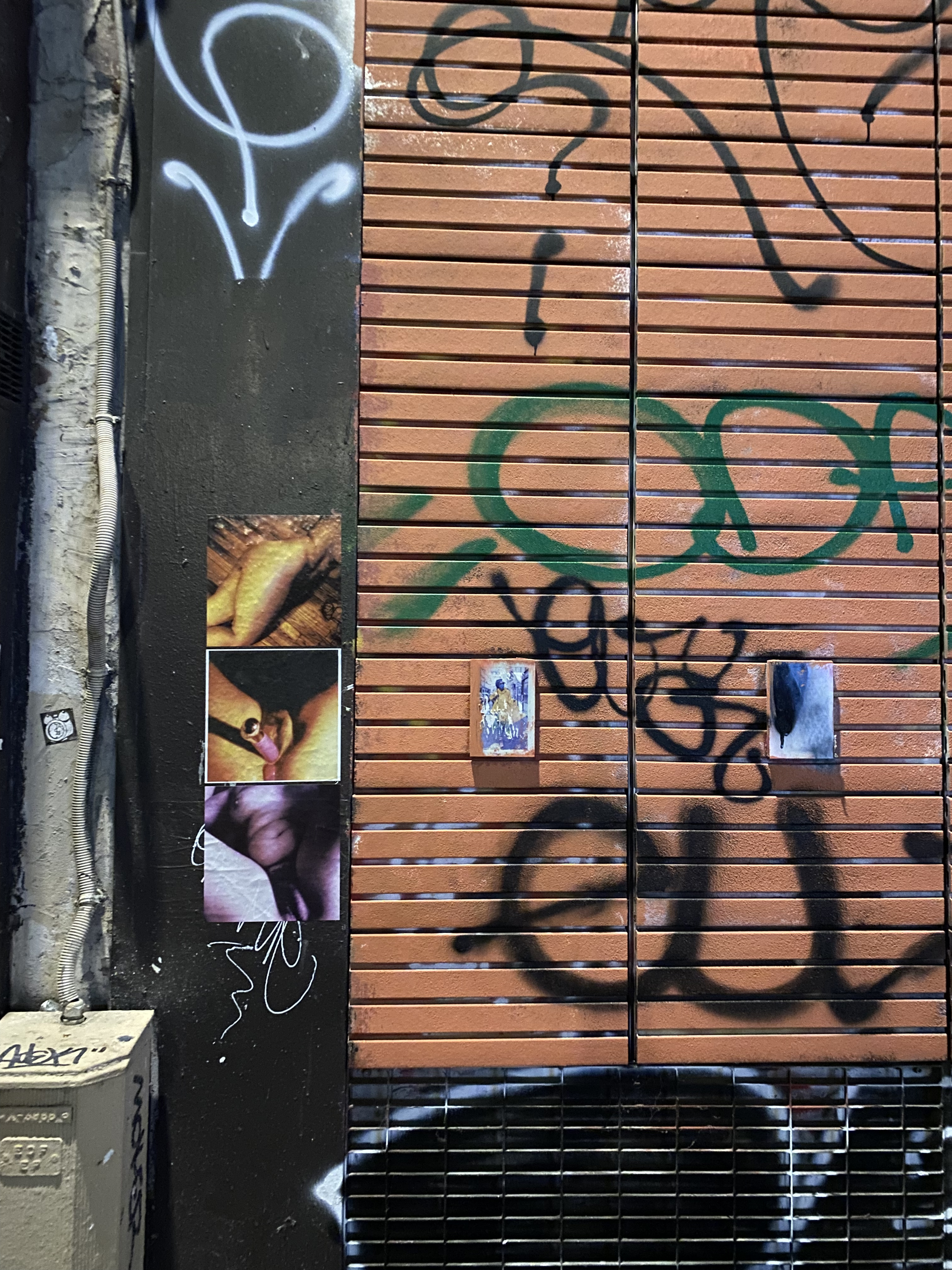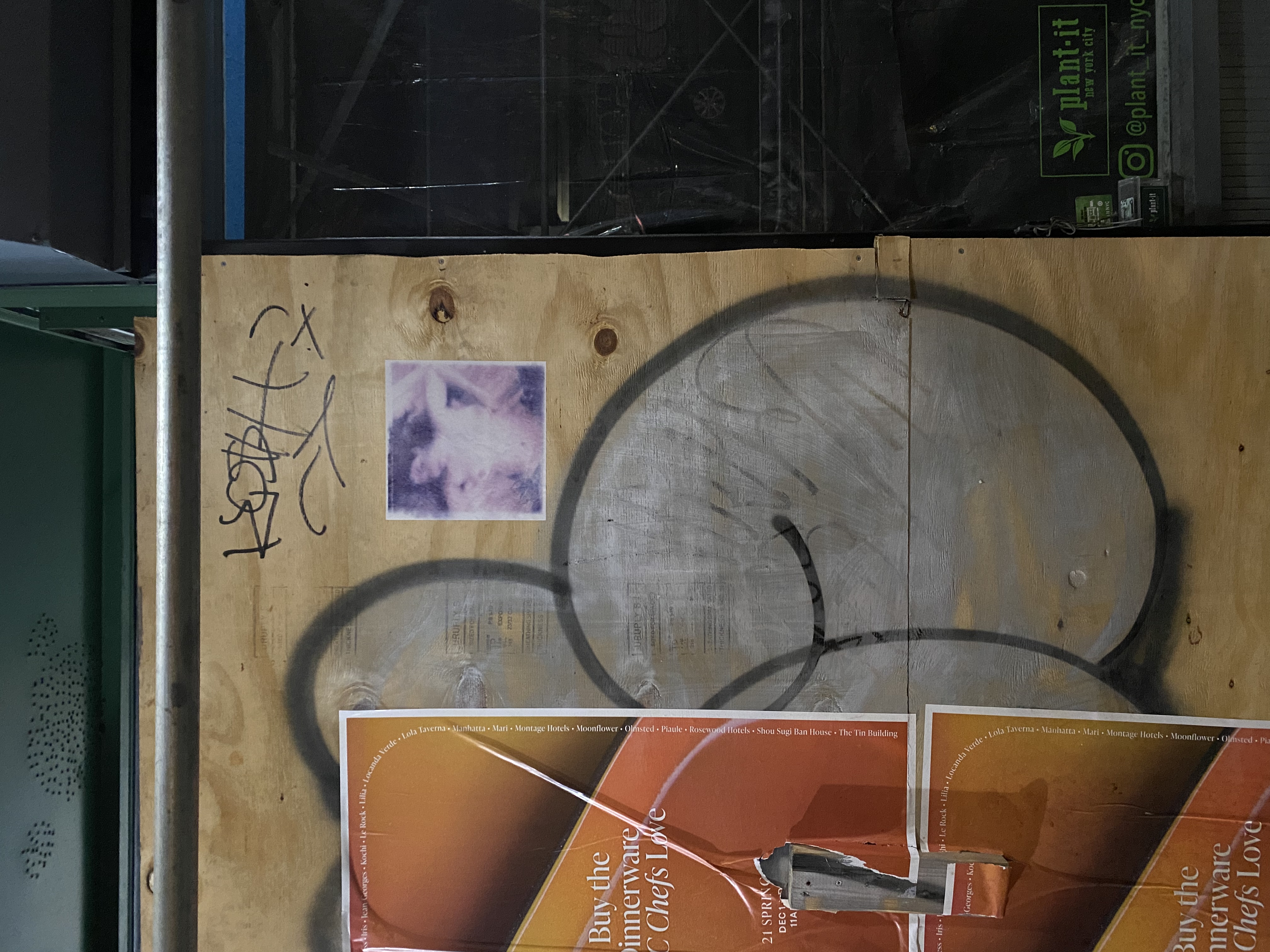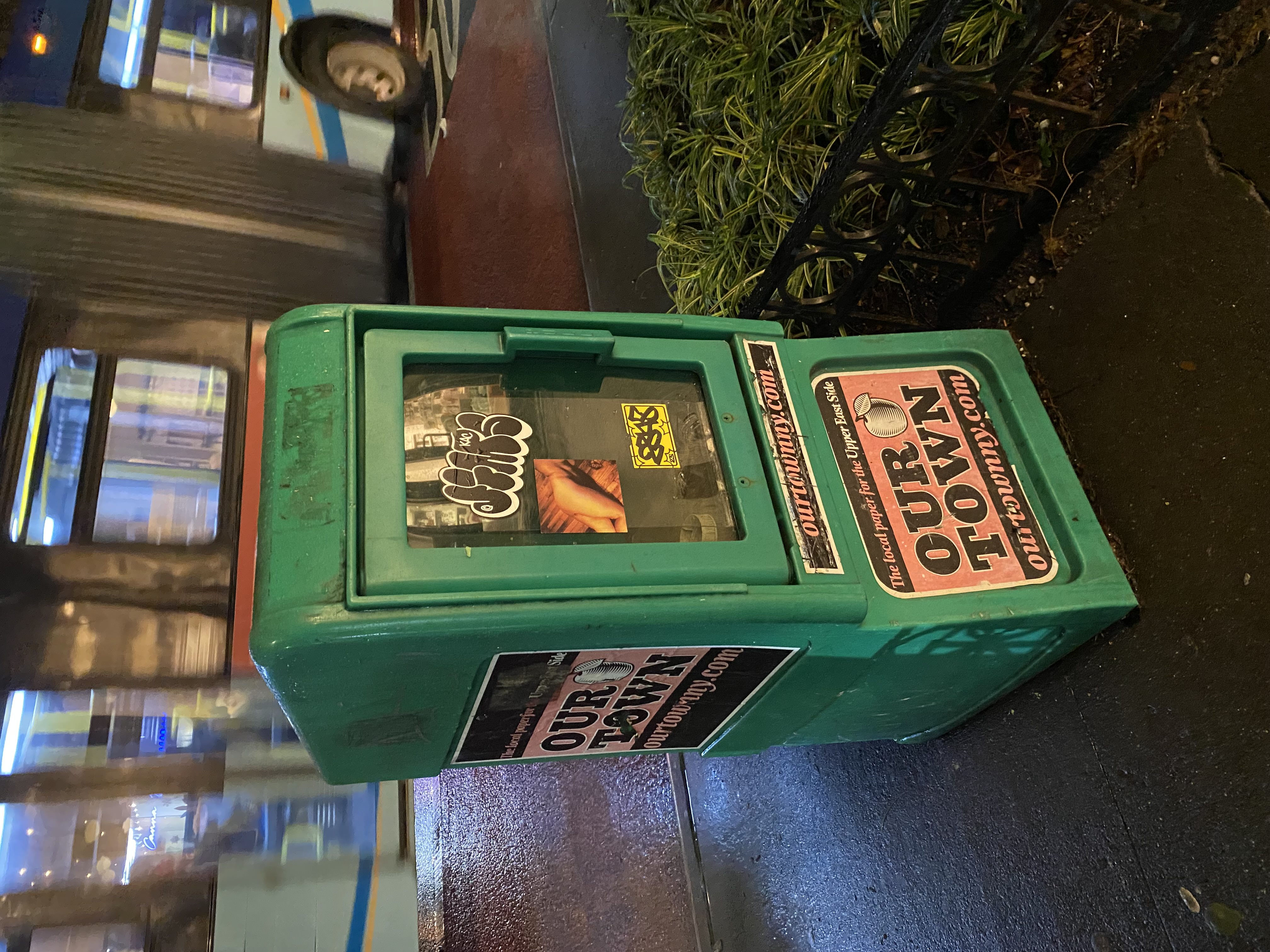Mange Ma Chatte
vinyl stickers
✴
, varied sizes
Images within popular US culture show us the idealized female form as having: soft skin, no body fat, typically a lighter skin tone but not too pale and not too dark, no blemishes or body hair, and absolutely no imperfections. The figure looks over to the camera with a soft gaze, a sexy gaze, a loving gaze, a happy gaze; a frozen body which we, the viewer, can choose to look at for as long as we want. These standards have, both consciously and subconsciously, informed my own understanding of performed attractiveness.
Self portraiture has shown me how deeply tied my perception of self is to a larger visual and image economy. To photograph one’s body is to be brutally aware of being perceived - and the female form in particular is stuck in a hyper-visual world, performing within the confines of a body. This deterministic way of visualizing the female body does not allow for freedom, choice, or true expression. In front of the camera my body feels performative and on display. In my early years of self-imaging, the images would reveal a mirror into the concepts of beauty that I have been conditioned to believe about myself from a young age, by way of media consumption. All of those lessons on femininity, and things I had gleaned over time about actualizing beauty were now being reflected back to me through the lens, and through my way of seeing.
Self portraiture has shown me how deeply tied my perception of self is to a larger visual and image economy. To photograph one’s body is to be brutally aware of being perceived - and the female form in particular is stuck in a hyper-visual world, performing within the confines of a body. This deterministic way of visualizing the female body does not allow for freedom, choice, or true expression. In front of the camera my body feels performative and on display. In my early years of self-imaging, the images would reveal a mirror into the concepts of beauty that I have been conditioned to believe about myself from a young age, by way of media consumption. All of those lessons on femininity, and things I had gleaned over time about actualizing beauty were now being reflected back to me through the lens, and through my way of seeing.
Being conscious of this phenomenon, I became eager to create honest reflections, and thus develop a new way of seeing myself, that is in alignment with my personhood. Without such gaze, without the presence of gender and sexuality, how could I see myself fully? Creating visual representations of my body in a space of aloneness and vulnerability meant that I was in control of the outcomes of this image. I am the creator and author of my form, and representation of self. Unclothed and feminine, unclothed and masculine, unclothed and silly, depressed, lonely, horny— there are infinite possibilities for being. I choose to sway between feelings and the fluidity of my identity. It is not lost on me that these images were destined to inherit some visual cues from white supremacist, patriarchal capitalism, due to how deeply those systems influence western culture. But with emphasis on intention and choice, I am not being dragged through the mud. I search for autonomy, and self-love.
The streets in New York City are lined with advertisements—images which rely heavily on the beauty industry's oppressive standards and reinforce their direness for relevance. And with propaganda informing these images, I yearn to point to them as dishonest representations of people. The stickers are my tags; like any graffiti writer, they are of my own hand and mind. They bring to the walls and construction boards a body which is on display in its own right. My body and intentions enter the public space in order to dictate my own ability to self-display. I want images to be taken more seriously, and to encourage critical conversation around ownership, representation, and the internalized effects of images on our view of self, and others.
The streets in New York City are lined with advertisements—images which rely heavily on the beauty industry's oppressive standards and reinforce their direness for relevance. And with propaganda informing these images, I yearn to point to them as dishonest representations of people. The stickers are my tags; like any graffiti writer, they are of my own hand and mind. They bring to the walls and construction boards a body which is on display in its own right. My body and intentions enter the public space in order to dictate my own ability to self-display. I want images to be taken more seriously, and to encourage critical conversation around ownership, representation, and the internalized effects of images on our view of self, and others.
✴ 100 stickers available for purchase. Please enter the order form below.

























